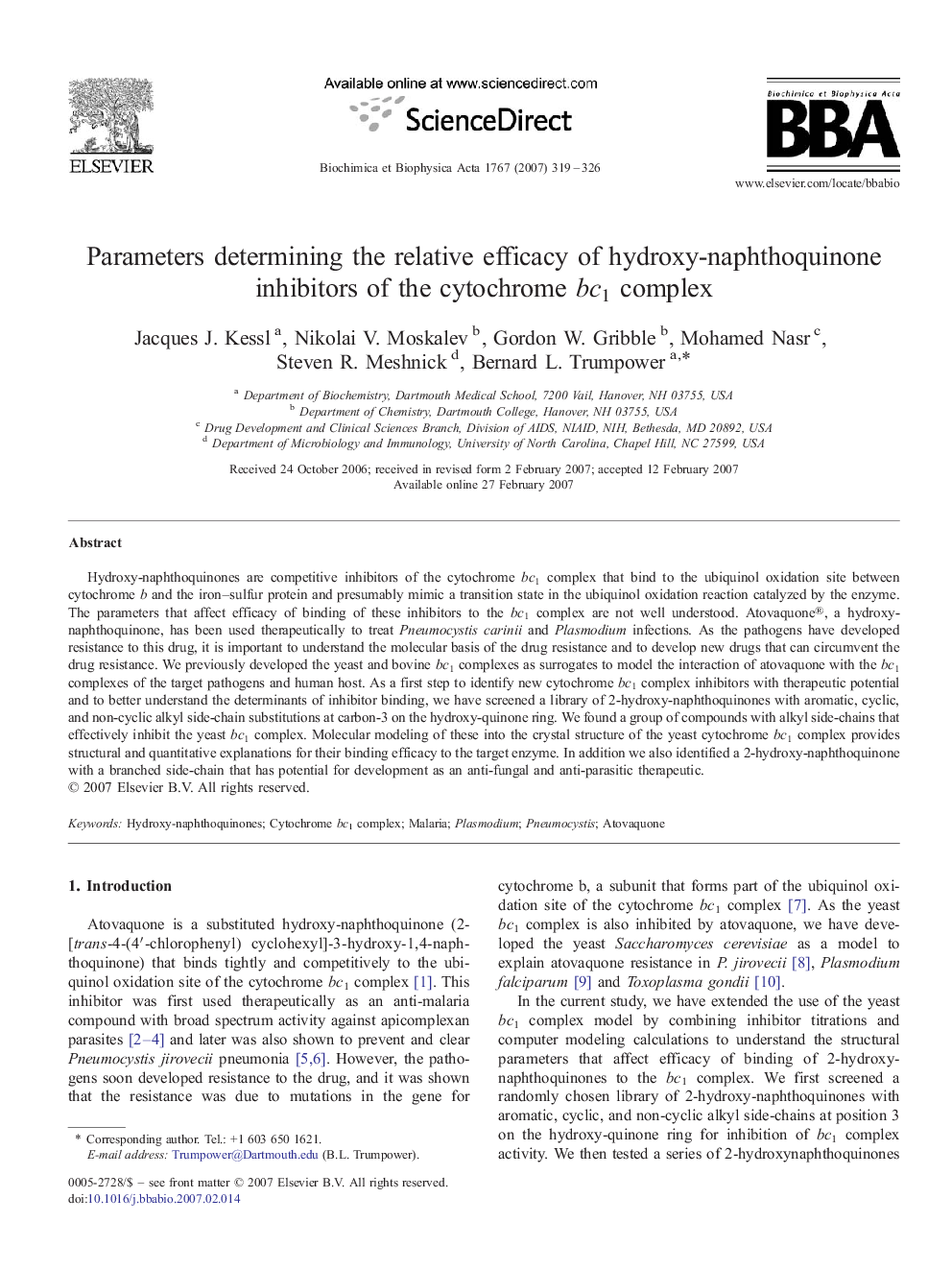| Article ID | Journal | Published Year | Pages | File Type |
|---|---|---|---|---|
| 1943533 | Biochimica et Biophysica Acta (BBA) - Bioenergetics | 2007 | 8 Pages |
Hydroxy-naphthoquinones are competitive inhibitors of the cytochrome bc1 complex that bind to the ubiquinol oxidation site between cytochrome b and the iron–sulfur protein and presumably mimic a transition state in the ubiquinol oxidation reaction catalyzed by the enzyme. The parameters that affect efficacy of binding of these inhibitors to the bc1 complex are not well understood. Atovaquone®, a hydroxy-naphthoquinone, has been used therapeutically to treat Pneumocystis carinii and Plasmodium infections. As the pathogens have developed resistance to this drug, it is important to understand the molecular basis of the drug resistance and to develop new drugs that can circumvent the drug resistance. We previously developed the yeast and bovine bc1 complexes as surrogates to model the interaction of atovaquone with the bc1 complexes of the target pathogens and human host. As a first step to identify new cytochrome bc1 complex inhibitors with therapeutic potential and to better understand the determinants of inhibitor binding, we have screened a library of 2-hydroxy-naphthoquinones with aromatic, cyclic, and non-cyclic alkyl side-chain substitutions at carbon-3 on the hydroxy-quinone ring. We found a group of compounds with alkyl side-chains that effectively inhibit the yeast bc1 complex. Molecular modeling of these into the crystal structure of the yeast cytochrome bc1 complex provides structural and quantitative explanations for their binding efficacy to the target enzyme. In addition we also identified a 2-hydroxy-naphthoquinone with a branched side-chain that has potential for development as an anti-fungal and anti-parasitic therapeutic.
